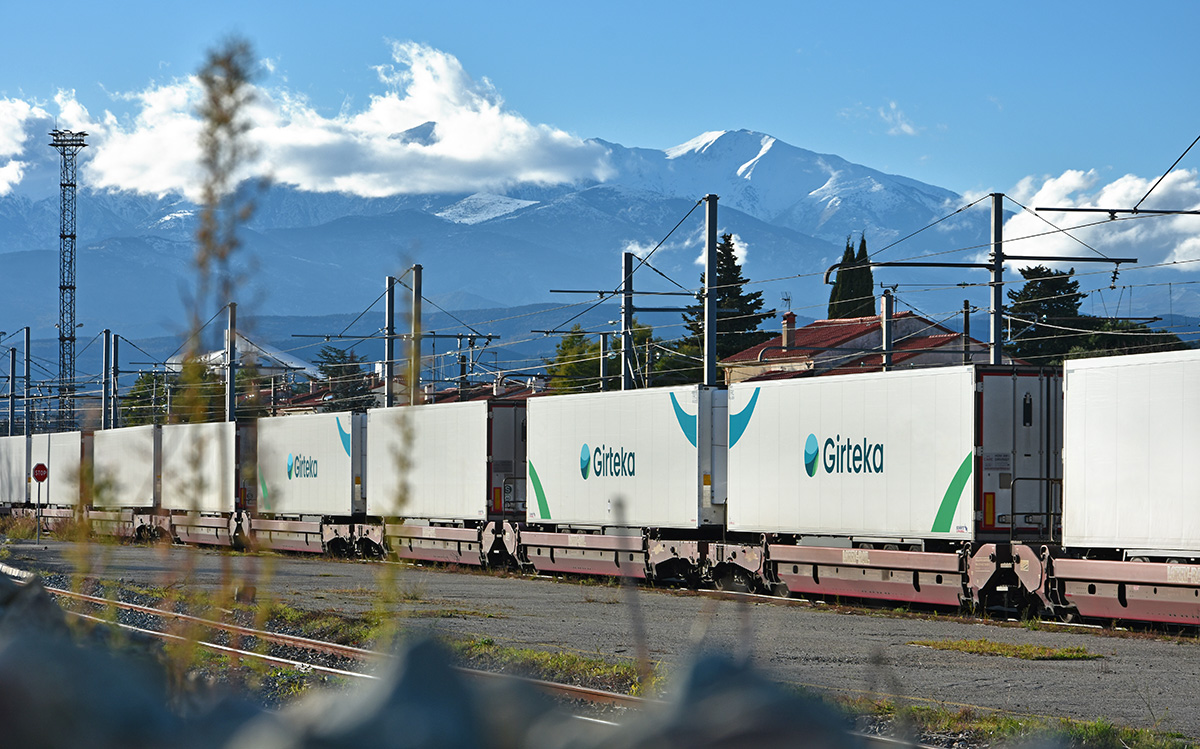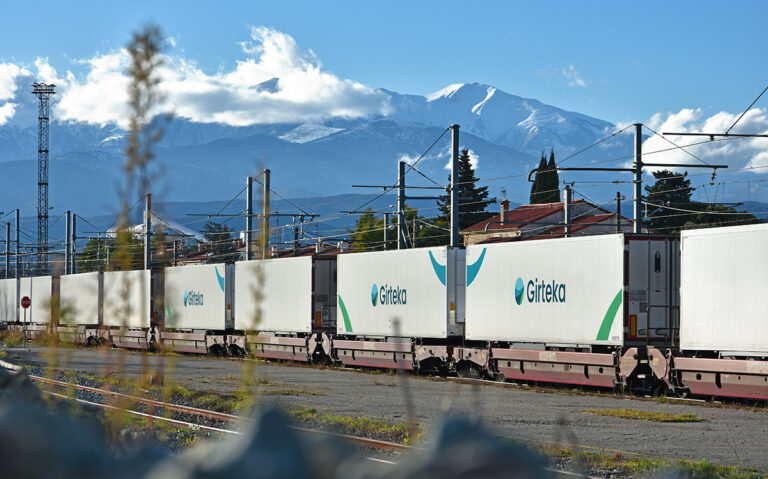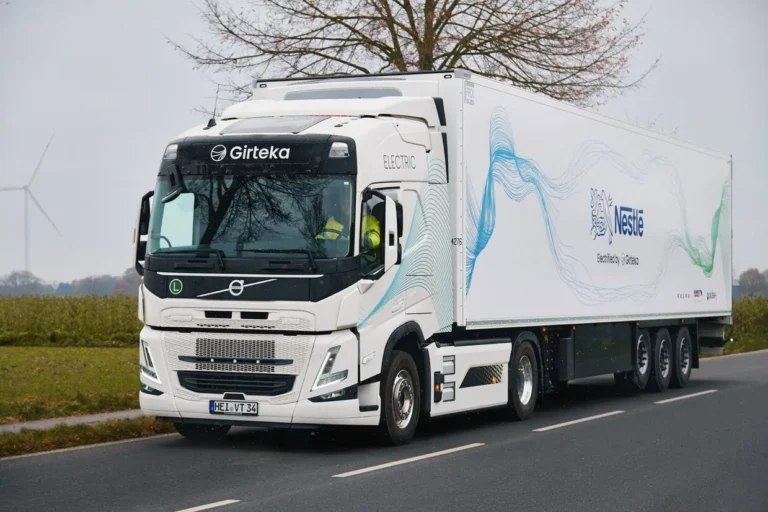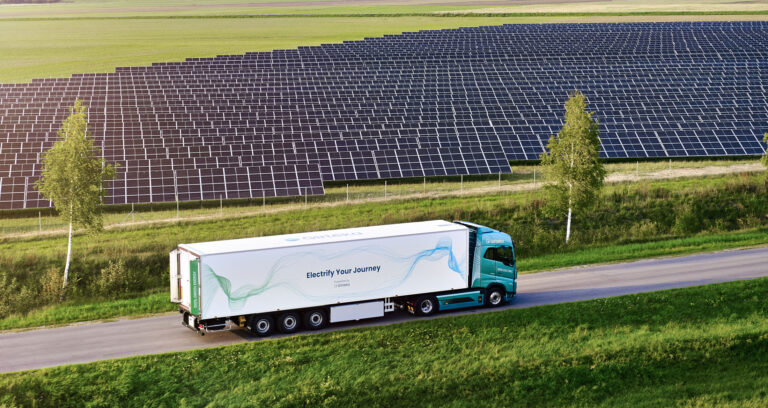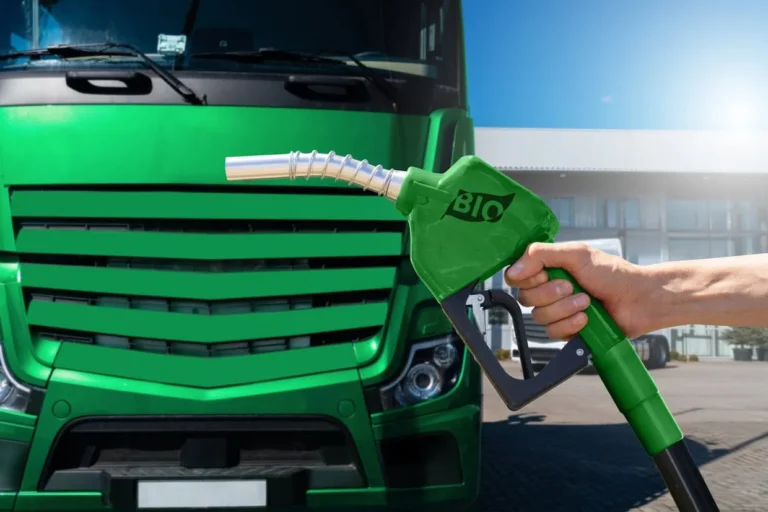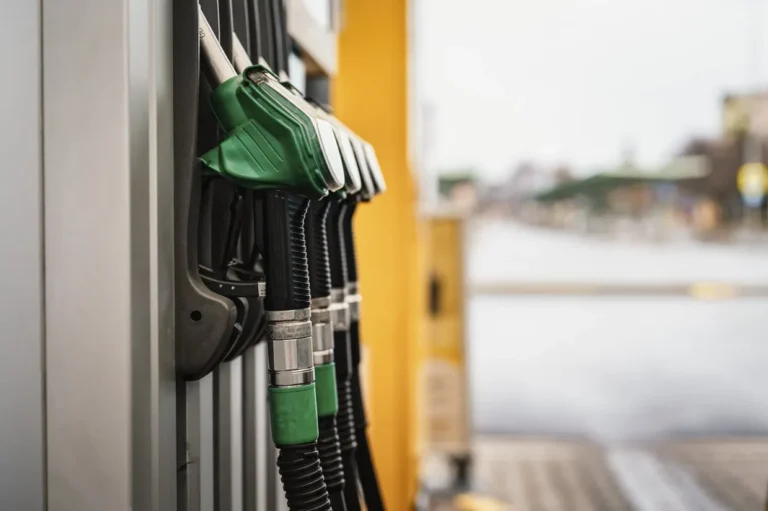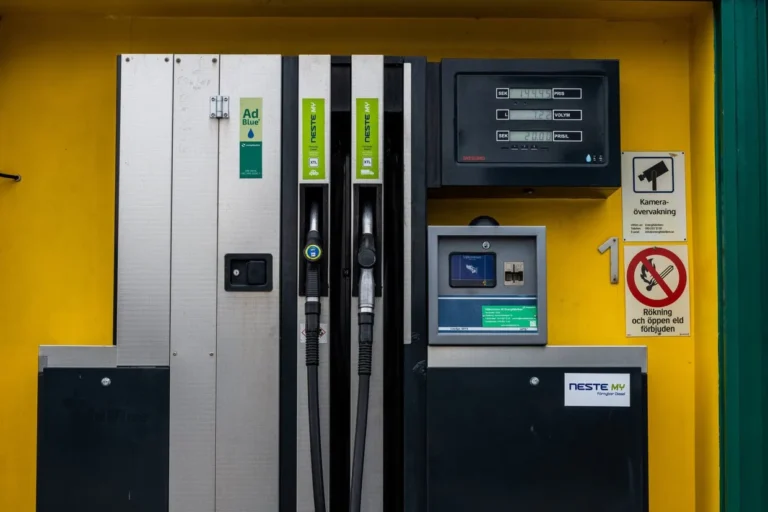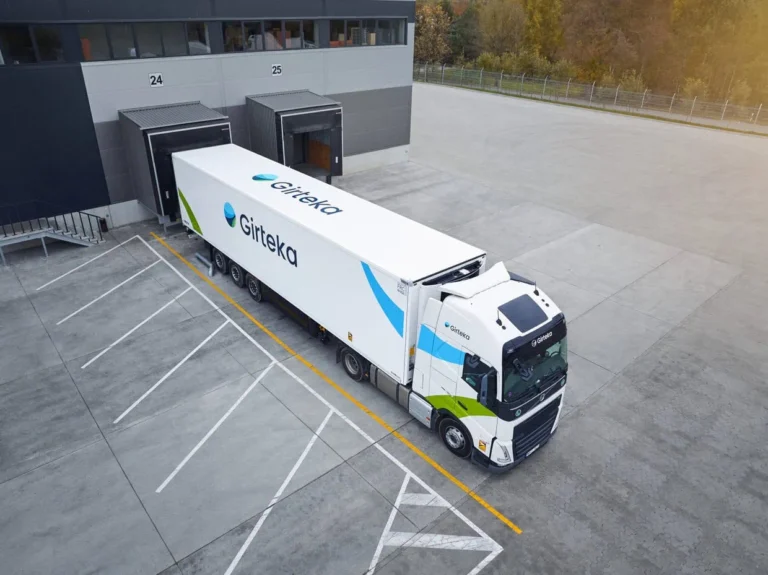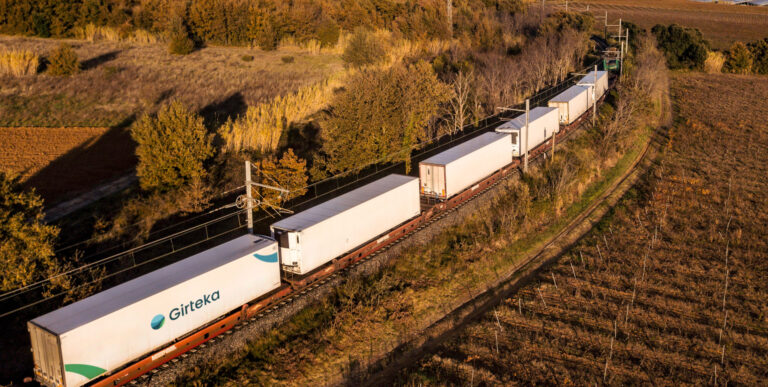Intermodal transport is one of the key options for enhancing the efficiency and sustainability of today’s freight movement. A significant reduction of greenhouse gas (GHG) emissions can be achieved by prioritizing rail and sea transport for most of the journey. That is why, the European Commission (EC) aims to shift 30% of road freight over distances greater than 300 km to these transport modes by 2030, and over 50% by 2050. Technological advancements and supportive regulatory frameworks further bolster this shift, aligning with global climate goals and promoting a low-carbon economy. But how effective intermodal transport really is in reducing emissions from freight transportation?
Overview of Intermodality
Intermodality refers to the seamless integration of different modes of transport within a single logistical framework, involving the transfer of goods through rail, road, sea, and air transport without handling the goods themselves during mode changes. This approach leverages the strengths of each transport mode to optimize overall supply chain efficiency.
In modern logistics, intermodality has become a pivotal strategy, enabling better utilization of transport networks, and enhancing supply chain flexibility and resilience. With the complexity of global trade and the increasing demand for fast, reliable, and cost-effective delivery solutions, intermodality is becoming indispensable.
Notably, intermodality promotes sustainable transport by reducing environmental impact from freight transportation, particularly in terms of emissions. In Europe, the most effective intermodal solution involves rail transport, combined with road freight. This solution can play a crucial role in decarbonizing transport.
By prioritizing rail for the majority of the journey and using road transport only for the initial and final legs, intermodal transport optimizes energy use and minimizes GHG emissions, aligning with broader climate goals.
Emissions in Transport
Transport is one of the largest sources of GHG emissions globally, accounting for approximately 24% of global CO2 emissions from fuel combustion. The heavy reliance on fossil fuels in road transport, aviation, and maritime shipping contributes significantly to this figure.
Road vehicles are the biggest emitters within the transport sector, contributing around 74% of global transport CO2 emissions. However, according to Eurostat in 2022 13.6 billion tonnes of goods were transported in Europe. Vast majority of it, almost 11 billion tonnes, were transported via road. Meanwhile, rail transport accounts for only 1-2% of global transport emissions.
Hence, intermodal rail transport solutions have proven effective in significantly reducing carbon emissions, as evidenced by various industry case studies. These examples highlight how integrating different modes of transport, such as rail and road, can lead to substantial environmental benefits and support sustainable logistics practices.
DB Schenker: the logistics giant reported a reduction of CO2 emissions by up to 50% for long-distance freight transport through intermodal solutions, compared to road-only transport.
Eurotunnel Le Shuttle Freight: by combining road and rail, this service has been able to reduce CO2 emissions by 1.4 million tonnes annually compared to traditional road transport.
Girteka: successfully integrated numerous intermodal railway lines in their daily operations, connecting Spain with Luxembourg, Germany with Italy and Austria, Great Britain with Italy and Spain, and Luxembourg with Poland. This initiative has enabled Girteka Group to save almost 17 million kg of CO2 during the year 2023.
According to the European Court of Auditors, despite the positive impact of intermodal transport, significant challenges remain in its widespread adoption. The report “Intermodal freight transport EU still far from getting freight off the road” highlights the need for better infrastructure, standardized regulations, and increased investment to fully realize the potential of intermodal transport in reducing emissions and enhancing sustainability across the EU.
Energy Efficiency
Intermodal transport optimizes energy use by capitalizing on the lower energy consumption rates of rail and sea transport. This approach in combining different means of transports leverages the inherent efficiencies of these transport modes, leading to significant reductions in fuel consumption and GHG emissions.
Road transport consumes approximately 0.2-0.5 litres of fuel per tonne-kilometre. This high variability in fuel consumption is influenced by factors such as vehicle type, load efficiency, road conditions, and driving practices. Trucks, which are the primary means of road freight, are less fuel-efficient compared to rail and sea transport. This results in higher fuel consumption and, consequently, higher emissions per tonne-kilometre (DHL Freight Connections).
The influence of pavement-vehicle interaction on fuel consumption also plays a crucial role in road transport efficiency. Field measurements have shown that fuel consumption can vary depending on the type of pavement. For instance, rigid pavements tend to consume less fuel compared to flexible pavements due to lower rolling resistance. Studies indicate a fuel saving of 2.25% on rigid pavements at 93 km/h and 2.22% at 112 km/h (Vilnius Tech Journals).
Rail transport consumes around 0.05-0.1 litres of fuel per tonne-kilometre. The efficiency of rail transport comes from its ability to move large quantities of goods with relatively low energy inputs. Electrified rail systems, in particular, enhance this efficiency by reducing reliance on fossil fuels and lowering emissions even further (IEA, UNECE).
By integrating rail into the freight transport chain, substantial energy savings can be achieved. This approach not only reduces overall fuel consumption but also minimizes GHG emissions and other pollutants, as, approximately, 85% of passenger rail activity and 55% of freight movements are powered by electricity, which does not emit direct CO2 emissions when sourced from renewable energy (IEA – International Energy Agency)
EU Policies on Intermodal Transport
The European Union (EU) has been at the forefront of promoting intermodal transport through various policies and incentives. The Trans-European Transport Network (TEN-T) policy aims to create a comprehensive network of rail, road, air, and sea routes to enhance intermodal transport.
TEN-T Core Network: The Trans-European Transport Network (TEN-T) Core Network focuses on developing key intermodal hubs and corridors to facilitate seamless transitions between different transport modes. This includes connecting major urban centres, ports, airports, and other infrastructure to support efficient and sustainable transport across Europe, ensuring high connectivity and interoperability.
Marco Polo Programme: provides funding for projects that shift freight from road to more sustainable modes like rail and sea. It supports initiatives that reduce road congestion, enhance environmental sustainability, and improve logistics efficiency through grants for innovative transport solutions and new maritime services.
Clean Transport Initiative: promotes the use of cleaner fuels and energy-efficient technologies in transport. This includes stricter emission standards for vehicles, incentives for electric and hydrogen-powered transport, and investments in alternative fuels infrastructure to reduce greenhouse gas emissions and support the EU’s climate goals.
The upcoming Greening Freight Transport Package aims to further reduce the environmental impact of freight transport. Key measures include:
Incentives for adopting low-emission technologies.
Stricter emission standards for heavy-duty vehicles.
Enhanced support for intermodal transport projects.
Technological Innovations
Technological advancements are crucial in optimizing intermodal transport by improving efficiency, reliability, and sustainability. For instance, the use of renewable energy sources (RES) such as solar and wind power in electrified rail systems significantly reduces carbon emissions. Hydrogen fuel cells are also emerging as a viable alternative for powering trains, offering zero-emission solutions for rail transport.
Innovations like CargoBeamer’s automated loading and unloading systems revolutionize the handling of trailers, enabling seamless transfers between road and rail without the need for cranes. This technology allows for quick and efficient trailer transfers, reducing handling times and costs. Real-time tracking and predictive analytics further enhance operational efficiency by providing continuous visibility, forecasting potential disruptions, and optimizing route planning.
Digital platforms facilitate seamless integration and coordination between different transport modes, allowing better route planning, real-time monitoring, and efficient management of logistics operations. This reduces delays, emissions, and improves overall supply chain synchronization.
AI and machine learning optimize logistics by analysing data for demand forecasting and load planning. IoT devices provide real-time data on cargo conditions, while cloud computing supports scalable data management and real-time collaboration, driving efficiencies across the transport network.
These technological innovations collectively enhance operational efficiency and sustainability in intermodal transport, supporting reduced emissions and optimized resource use.
Limitations and Collaborative Solutions
Intermodal transport faces several challenges, including the need for harmonized standards and adequate infrastructure like terminals and freight corridors. These barriers require substantial initial investments but offer long-term savings in fuel costs, emissions, and operational efficiency. To address these challenges, significant funding and public-private partnerships (PPPs) are essential for developing and maintaining robust infrastructure.
Due to infrastructure challenges, especially related to lanes, intermodal transport—primarily rail—is redesigning supply chains to deliver goods more efficiently by combining road and rail. This approach requires collaboration among customers, solution providers, carriers, regulatory bodies, and local governments to ensure effective implementation.
Effective intermodal transport necessitates robust collaboration and investment, significantly enhanced through PPPs and international cooperation. PPPs leverage public support and private efficiency, evident in joint investments in intermodal terminals.
International cooperation, facilitated by initiatives like the International Transport Forum (ITF), is vital for standardizing regulations and ensuring seamless intermodal transport across borders, contributing to a more efficient and sustainable global logistics network.
Long-term Vision for Intermodal Transport
Through collaborative initiatives, companies exemplify how aligning with the EU’s strategic goals by leveraging intermodal transport can reduce emissions, optimize logistics operations, and support a sustainable and efficient global logistics network.
The long-term vision for intermodal transport involves creating an integrated, sustainable, and efficient global logistics network. This requires continuous innovation, investment, and policy support.
Future advancements will likely focus on automation, digitalization, and the development of smart logistics hubs. These innovations will enhance the efficiency and sustainability of intermodal transport.
The benefits of intermodal transport are evident through significant reductions in greenhouse gas emissions, energy savings, and enhanced logistical efficiency. For example, Move Intermodal managed to reduce 109,751 tons of CO2 emissions in 2022 by maximizing the use of rail and water transport, demonstrating a clear environmental advantage over traditional road transport.
Despite the challenges, such as the need for harmonized standards and substantial initial investments in infrastructure and technology, the long-term savings and environmental benefits make intermodal transport economically viable and essential for future transport strategies.
By integrating advanced technologies and adopting renewable energy sources, intermodal transport can further enhance its efficiency and sustainability, supporting the transition to a low-carbon economy.
